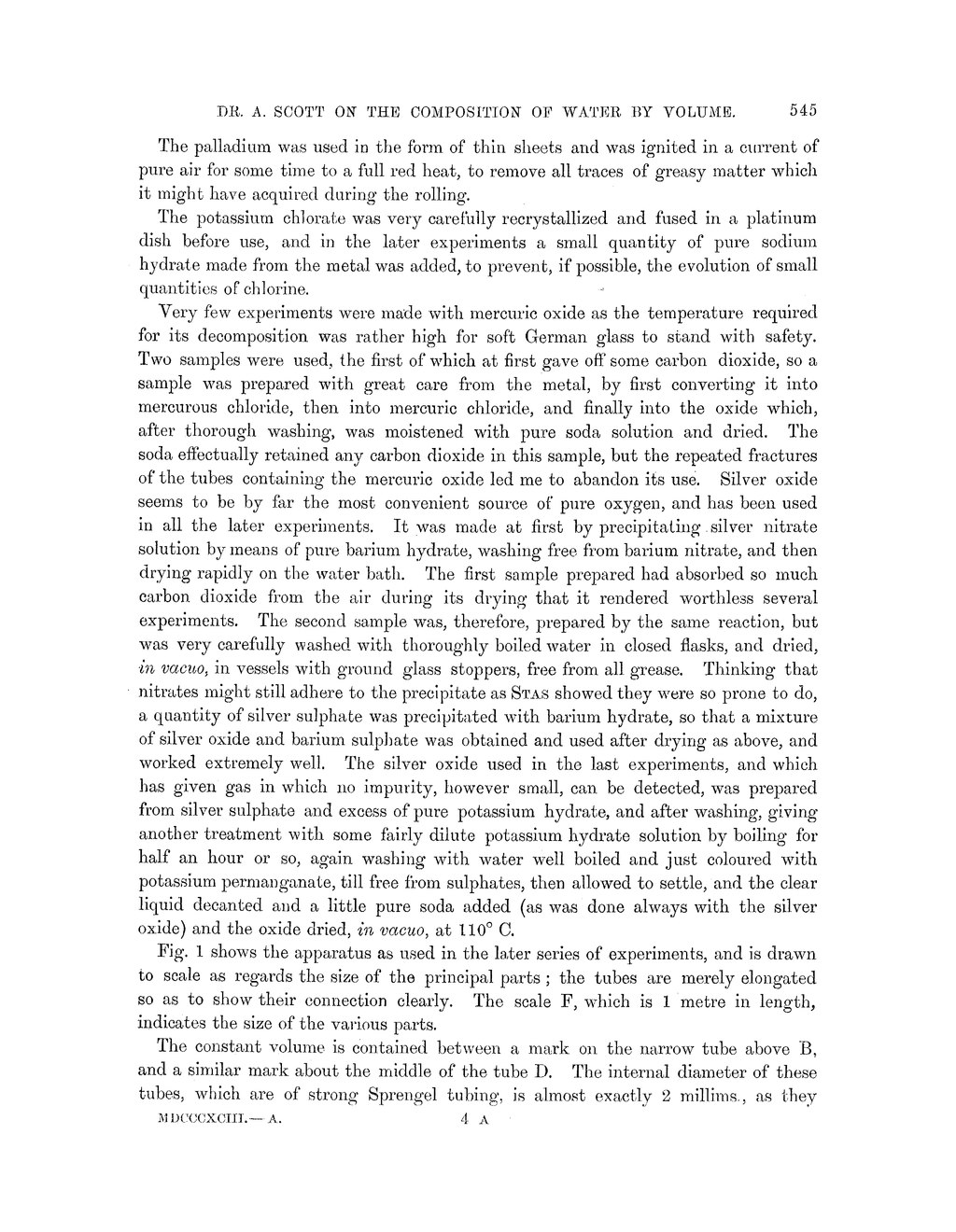The palladium was used in the form of thin sheets and was ignited in a current of pure air for some time to a full red heat, to remove all traces of greasy matter which it might have acquired during the rolling.
The potassium chlorate was very carefully recrystallized and fused in a platinum dish before use, and in the later experiments a small quantity of pure sodium hydrate made from the metal was added, to prevent, if possible, the evolution of small quantities of chlorine.
Very few experiments were made with mercuric oxide as the temperature required for its decomposition was rather high for soft German glass to stand with safety. Two samples were used, the first of which at first gave off some carbon dioxide, so a sample was prepared with great care from the metal, by first converting it into mercurous chloride, then into mercuric chloride, and finally into the oxide which, after thorough washing, was moistened with pure soda solution and dried. The soda effectually retained any carbon dioxide in this sample, but the repeated fractures of the tubes containing the mercuric oxide led me to abandon its use. Silver oxide seems to be by far the most convenient source of pure oxygen, and has been used in all the later experiments. It was made at first by precipitating silver nitrate solution by means of pure barium hydrate, washing free from barium nitrate, and then drying rapidly on the water bath. The first sample prepared had absorbed so much carbon dioxide from the air during its drying that it rendered worthless several experiments. The second sample was, therefore, prepared by the same reaction, but was very carefully washed with thoroughly boiled water in closed flasks, and dried, in vacuo, in vessels with ground glass stoppers, free from all grease. Thinking that nitrates might still adhere to the precipitate as Stas showed they were so prone to do, a quantity of silver sulphate was precipitated with barium hydrate, so that a mixture of silver oxide and barium sulphate was obtained and used after drying as above, and worked extremely well. The silver oxide used in the last experiments, and which has given gas in which no impurity, however small, can be detected, was prepared from silver sulphate and excess of pure potassium hydrate, and after washing, giving another treatment with some fairly dilute potassium hydrate solution by boiling for half an hour or so, again washing with water well boiled and just coloured with potassium permanganate, till free from sulphates, then allowed to settle, and the clear liquid decanted and a little pure soda added (as was done always with the silver oxide) and the oxide dried, in vacuo, at 110° C.
Fig. 1 shows the apparatus as used in the later series of experiments, and is drawn to scale as regards the size of the principal parts; the tubes are merely elongated so as to show their connection clearly. The scale F, which is 1 metre in length, indicates the size of the various parts.
The constant volume is contained between a mark on the narrow tube above B, and a similar mark about the middle of the tube D. The internal diameter of these tubes, which are of strong Sprengel tubing, is almost exactly 2 millims., as they
